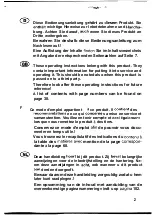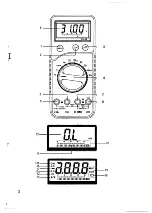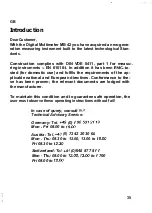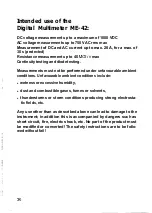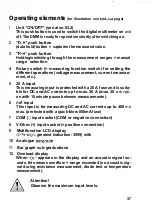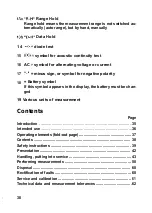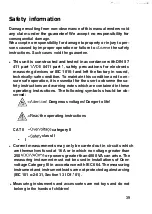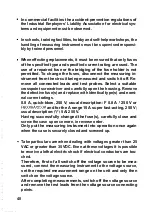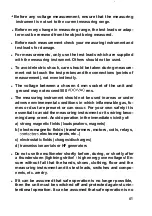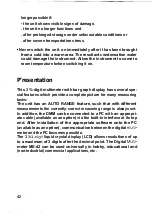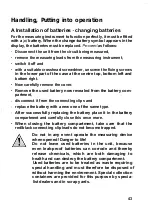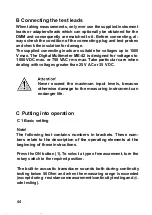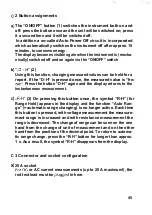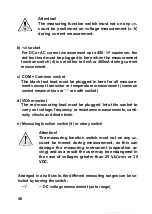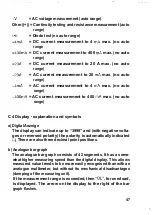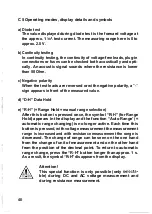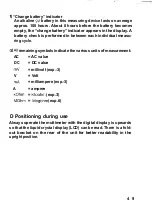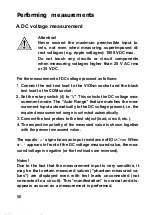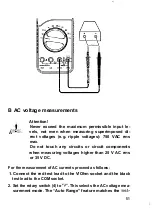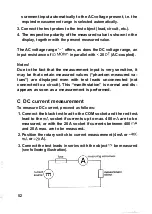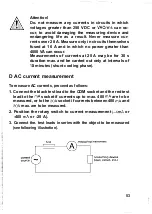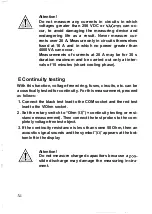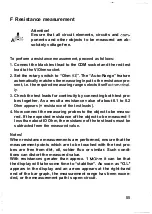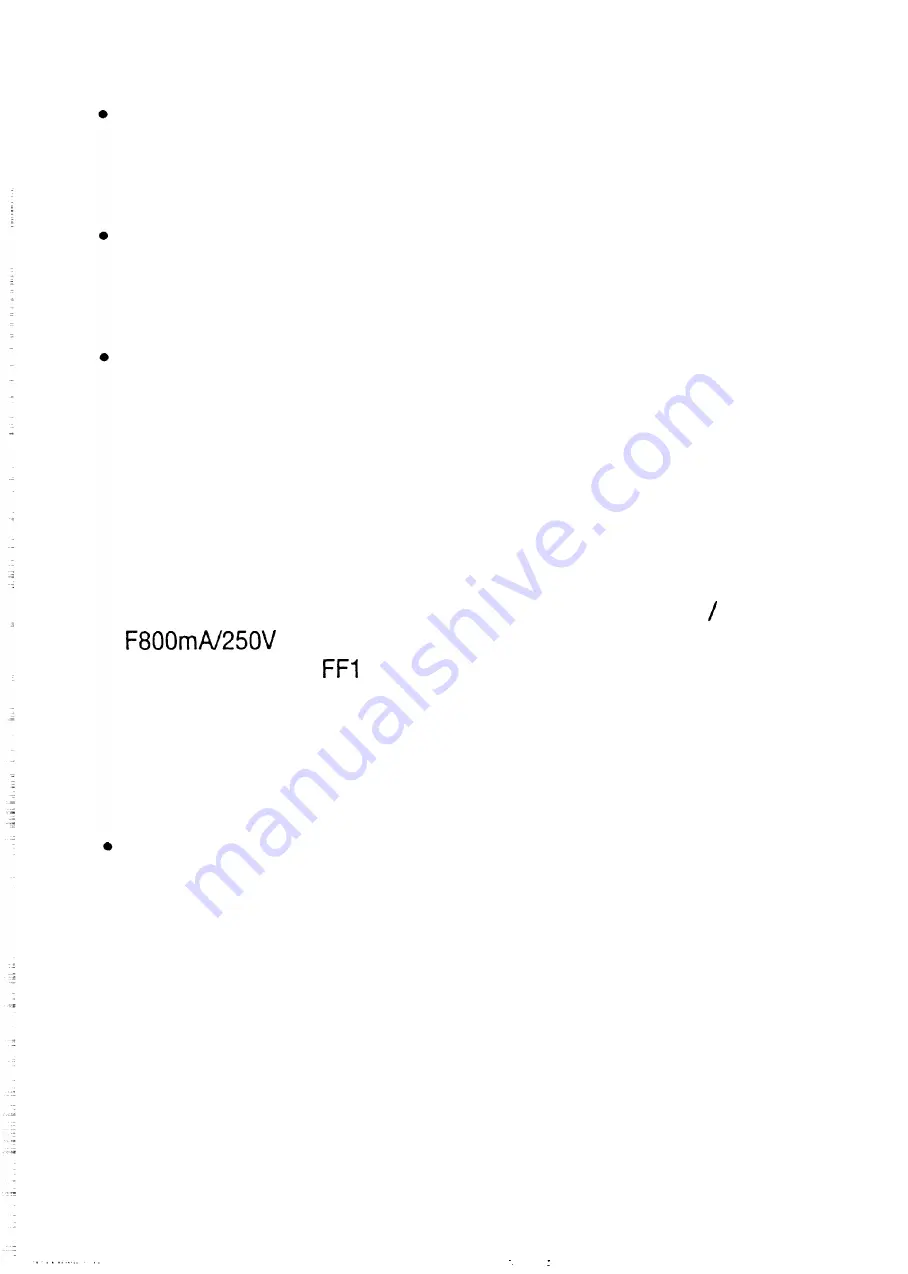
In commercial facilities the accident-prevention regulations of
the Industrial Employers’ Liability Association for electrical sys-
tems and equipment must be observed.
In schools, training facilities, hobby and self-help workshops, the
handling of measuring instruments must be supervised responsi-
bly by trained personnel.
When effecting replacements, it must be ensured that only fuses
of the specified type and specified current rating are used. The
use of a repaired fuse or the bridging of the fuse holder is not
permitted. To change the fuses, disconnect the measuring in-
strument from the circuit being measured and switch it off. Re-
move all connected leads and test probes. Select a suitable
crosspoint screwdriver and carefully open the housing. Remove
the defective fuse(s) and replace with identical type(s) and nomi-
nal current ratings.
0.8 A, quick-blow, 250 V; usual description: F 0.8 A 250 V or
and for the A range 15 A super fast-acting, 250 V;
usual description:
5 A/ 250 V.
Having successfully changed the fuse(s), carefully close and
screw the case up once more, in reverse order.
Only put the measuring instrument into operation once again
when the case is securely closed and screwed up.
Take particular care when dealing with voltages greater than 25
VAC or greater than 35 VDC. Even at these voltages it is possible
to receive a lethal electric shock if electrical conductors are tou-
ched.
Therefore, first of all switch off the voltage source to be mea-
sured, connect the measuring instrument to the voltage source,
set the required measurement range on the unit and only then
switch on the voltage source.
After completing measurements, switch off the voltage source
and remove the test leads from the voltage source connecting
points.
40


